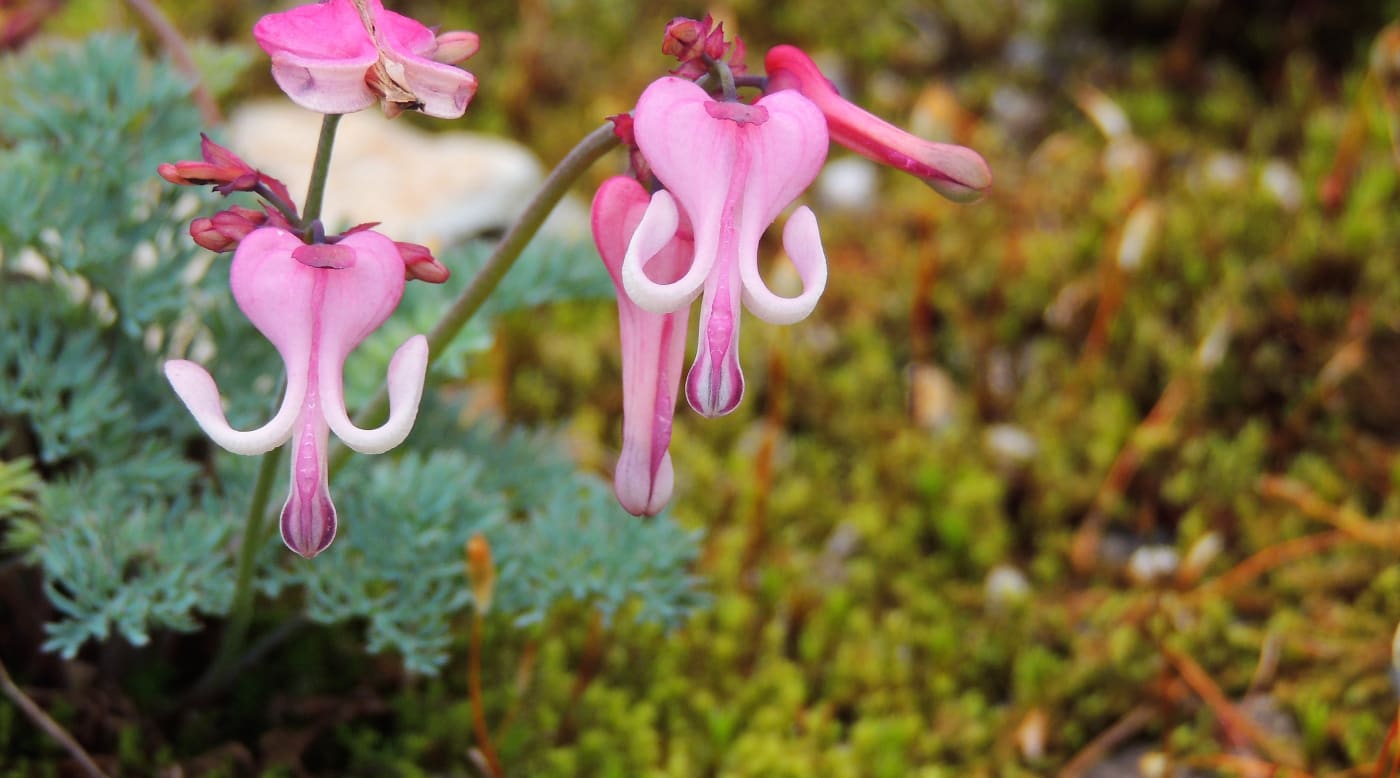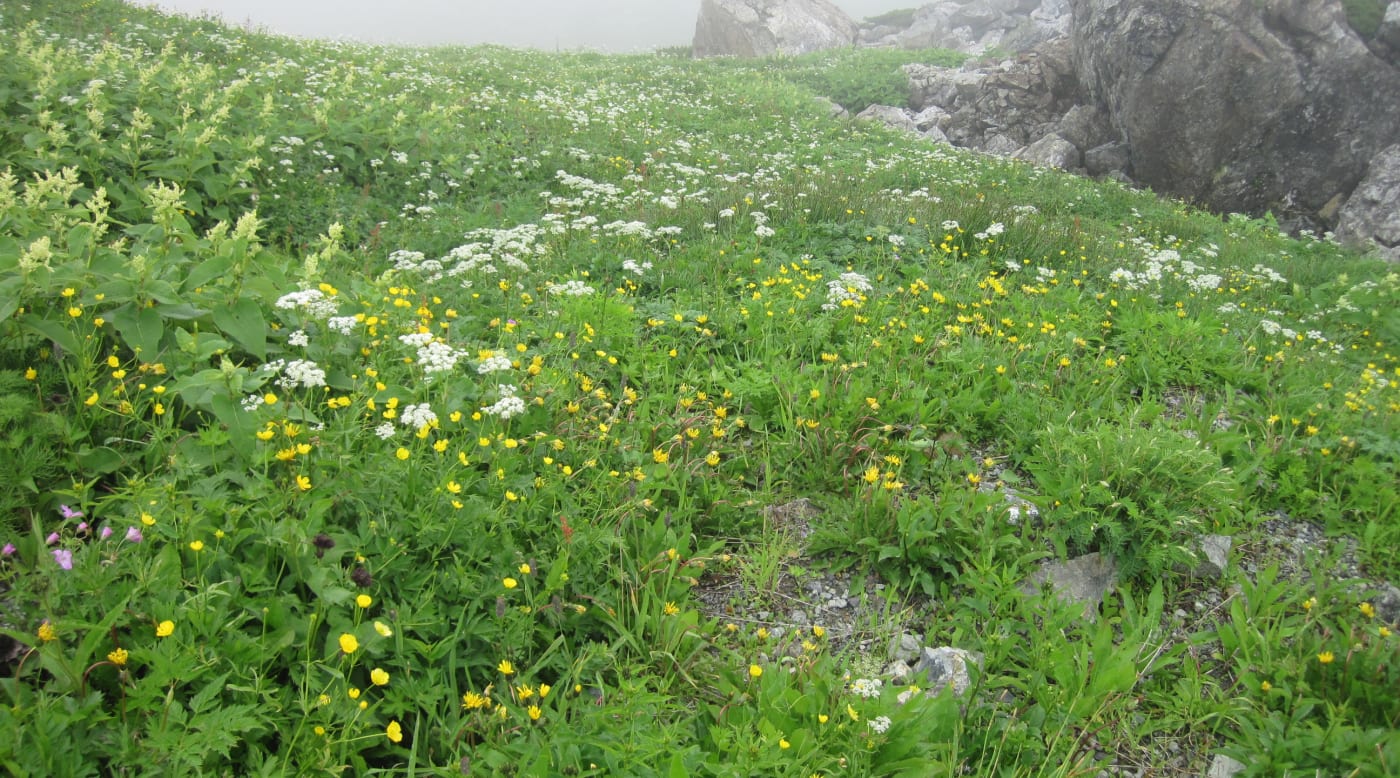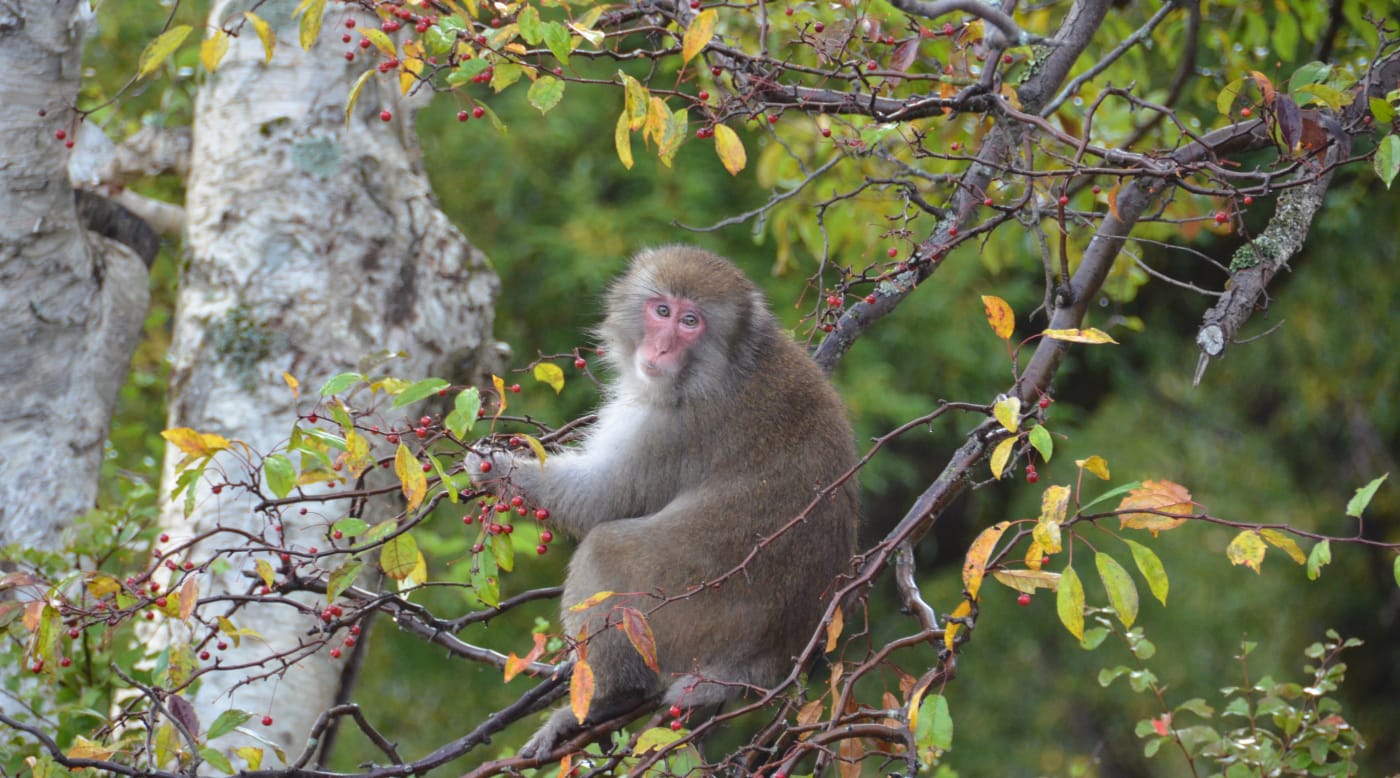Chubusangaku National Park's soaring mountains harbor a distinct ecosystem. The vegetation varies by elevation: Japanese stone pine and coniferous forests dominate the highest peaks, Erman's birch forests typically sit on slopes between 1,500 and 2,500 meters, and the lower reaches are covered with beech and Mongolian oak.
The park is home to mammals such as Asiatic black bears, Japanese macaques and Japanese serows. There is also a rich variety of alpine wildlife, such as the rock ptarmigan and the Asamana Arctic butterfly.



